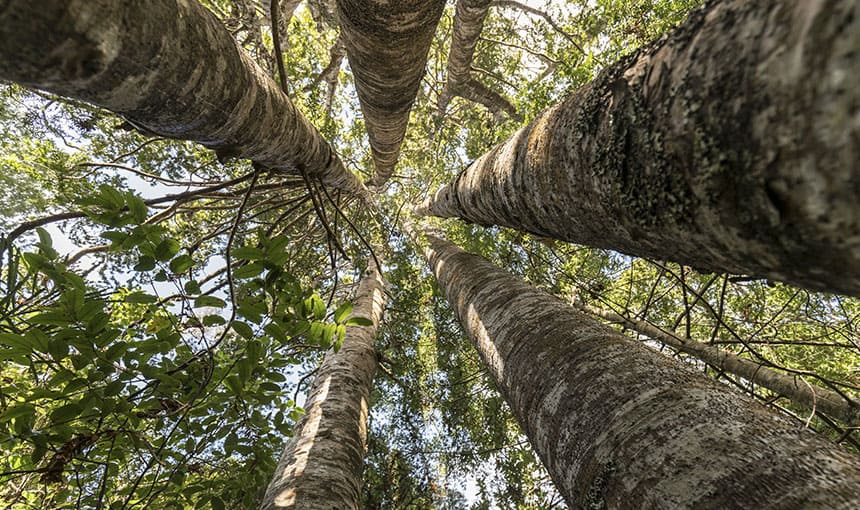16.12.2021
In 2017 the research findings discussed below, on the origins of Phytophthora agathidicida, were first made public as a media release. This was not associated with a publication or report, meaning there was no ability for scientists at the time to respond to the conclusions of the research.
This is not usual conduct for presenting scientific findings. Unfortunately, the release of these findings caused substantial angst for communities working to protect kauri. They had to repeatedly defend management practices they had in place to prevent the spread of P. agathidicida. These communities reached out to the wider scientific community for support and clarification over the research findings, but the lack of supporting publication or report meant scientists were limited in how they could respond. Four years later a scientific publication of these findings was finally released.
Our response below is intended for those communities who were, and continue to be, directly impacted by the original media release of this research and the subsequent science publication. We want to provide support for the continuation of the management practices in place to prevent the spread of P. agathidicida
Our response has been made available on the BioHeritage website so it is accessible to the affected communities, recognising that the original release of these findings was in a public media release. It is not intended to replace scientific debate and discussion that takes place in journals and at conferences.
25.08.2021
Ngā Rākau Taketake are concerned over the interpretation of Winkworth et al.’s manuscript The mitogenome of Phytophthora agathidicida: Evidence for a not so recent arrival of the “kauri killing” Phytophthora in New Zealand, and how speculative discussion by the authors has been taken as evidence to push for changes in our current management of kauri dieback. Changes to the management of kauri dieback must be backed by robust science and when they are, appropriate changes should then be made.
This paper starts to address one of the critical questions that has remained unanswered for kauri dieback, using mitochondrial DNA sequence data to determine if P. agathidicida was introduced or is endemic to Aotearoa New Zealand. The strongest conclusion of the manuscript is that P. agathidicida is introduced. However, their determination that the introduction occurred prior to colonial settlement is speculative, and as the authors clearly state themselves, is based on the theory that it was a single introduction event.
The reality is we currently have no idea how or when the pathogen could have been introduced, therefore we urge caution. Looking back in time to piece together a history is very complicated and subjective. The authors suggest introduction following the Second World War and introduction within the period of colonial settlement from 1845-1945 are separate hypotheses. However, these should not be considered mutually exclusive events as there could have been successive introductions over both time periods and multiple isolates introduced. There are many alternative pathways of introduction the authors have not discussed or considered. The introduction of multiple isolates increases the population genetic diversity and can make it appear the pathogen has been present for longer than it has.
The authors propose the lack of genetic similarity between the populations they tested as evidence to dismiss multiple introduction or multiple isolates, but there are several reasons why these claims are not supported by robust science. Firstly, a very small sample size of 16 isolates is a poor representation of population diversity. Secondly, the isolates used in this study have come from isolations in association with acute disease symptoms across the landscape, which we know for kauri dieback develop after an extended period of time. So, the point of encounter of the host with the pathogen is likely to have been decades ago when the distribution of the pathogen was likely limited, and predates the more recent widespread landscape disturbances that have facilitated broader establishment.
Based on the above factors, there is nothing in Winkworth’s manuscript that does not support the current approach to kauri dieback management, with a focus on minimising the further spread of the pathogen and impact of disease in areas in which the pathogen has established and disease is being expressed. Their findings add to our knowledge of P. agathidicida. Changes to management of kauri dieback based on erroneous conclusions could have devastating consequences for kauri and kauri ecosystems. We urge caution in changes based on interpreting the history of establishment and movement of P. agathidicida; any changes must be based on robust science findings.
